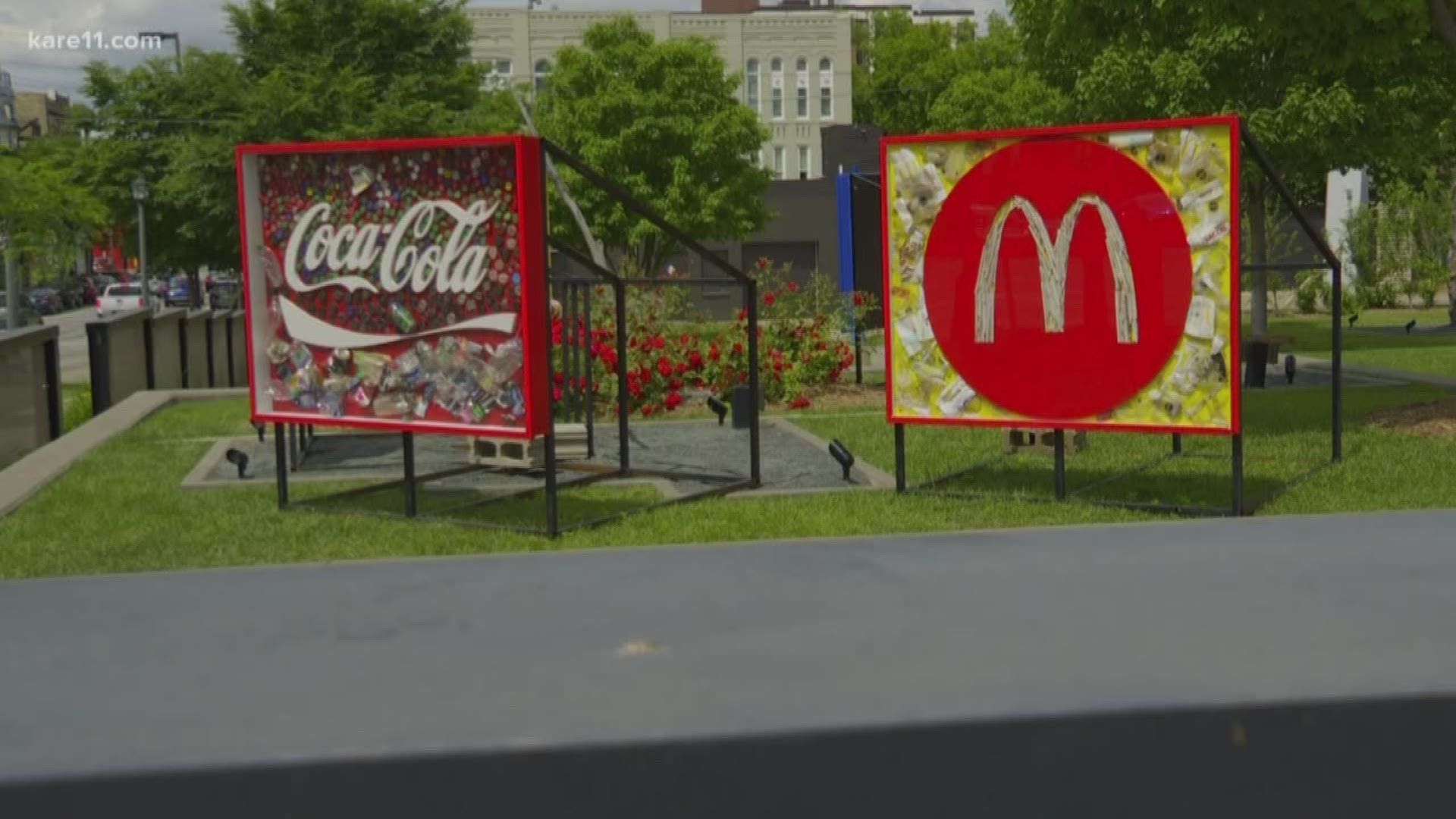MINNEAPOLIS — Like a fine piece of art, if you admire Lake Hiawatha from a few feet away, it's breathtaking.
When you get up close and personal though, the details start to show themselves, and what you see isn't so pretty. From KitKat wrappers to pieces of unknown Styrofoam, the lake's border is plagued with garbage.
"I took a ball, wrote my address on it and I put it in the storm drain in front of my house and the next rain, I found it in the lake," Sean Connaughty said. Connaughty is an artist and also is a professor of art at the University of Minnesota.
Other than art, Connaughty said he's always been passionate about the environment. He said he started to clean up Lake Hiawatha since 2015, when he was scoping out the surrounding area for a potential art installation. He said he was shocked at the amount of garbage in the lake and started collecting trash.
That passion continued, and he said he led a group of about a 100 volunteers on Earth day to do a mass clean-up of Lake Hiawatha on Earth Day, April 20th.
"Everyone worked really hard, we got 350 pounds of trash," Connaughty said. "If you think Styrofoam and plastic, it takes a lot to make 350 pounds."
And as artists do, Connaughty said he wanted to create something drawn from his own life experiences.
"We would audit all the items, separate all the materials, then by brand name and by their parent corporations," Connaughty explained. "Then we were able to create a litst of who are the top corporations that were found in the trash."
The big four came out to be Mars, Pepsi, Coca-Cola and McDonald's. Connaughty then created a four paneled display that is now sitting at Minneapolis College of Art and Design's sculpture garden. The logos of the four corporations are made "collage-style" from its corresponding garbage.
The McDonald's logo was made purely out of its plastic cups and its plastic straws, all found in Lake Hiawatha.
"[It's] definitely the idea of public pressure," Connaughty said. "So if you think about who is responsible for the trash, well, we have tradionally and always thought of the consumer. The person who consumes the product and discards of it improperly and that's true--but it's also true that corporations are producing all these materials and selling it to us, encouraging us to purchase them."
Bottle cap after bottle cap, wrapper after wrapper, it's hard to believe they passed many hands before ending up in Connaughty's hands. It's also difficult to believe that the artist who dealt with all this trash still has any faith in humanity left. However, Connaughty is the complete opposite.
"I see a lot of minds changing, a lot of awareness growing," Connaughty said. "I see our cities and our parks coming together to work to address these problems."
He said he has hope for the future and that he's betting that educating the public will make a difference.
"I would say that the number one thing is that everything is connected," he said. "What happens on our streets ends up going directly to our lakes so understand that connection."
KARE 11 reached out to McDonald's, PepsiCo, Coca-Cola and Mars Inc. for comment.
McDonald's sent this in response:
"McDonald’s is focused on improving its packaging to help significantly reduce waste and positively impact the communities we serve around the world. In Minneapolis, McDonald’s restaurants comply with the Green to Go Environmentally Acceptable Packaging Ordinance. We offer recycling and garbage receptacles within our restaurants and we encourage our customers to use appropriate refuse containers to dispose of their waste when they take their orders to go."
Mars Inc. responded with this comment:
"We’re disappointed to learn that our packaging has been found in the Lake Hiawatha Trash Survey and commend the effort of the volunteers who help keep the shorelines and lake clean. At Mars, we are committed to sustainable packaging and our vision is a world where plastics and packaging never become waste. Our goal is to design packaging that is 100% recyclable, reusable or compostable by 2025. In order to achieve our goals we are collaborating with NGO’s, governments and partners like the Ellen MacArthur Foundation’s New Plastic Economy Global Commitment. We are also committed to supporting consumer recycling education. You can learn more about our continued commitment to sustainable packaging here."
PepsiCo responded with this comment:
"PepsiCo shares the concern that plastics and other waste are accumulating in the marine environment and on land, which is why we are committed to achieving 100% recyclable, compostable or biodegradable packaging by 2025. Protecting our planet is hugely important to us and the issue of plastics and waste requires urgent attention. PepsiCo has a number of initiatives in place to increase recycling rates and reduce the amount of packaging we use, all while working with experts and investing in this space to bring the latest sustainable packaging advances to market. But, we recognize the need to do more. PepsiCo has elevated its participation in cross-industry and NGO initiatives, such as The New Plastics Economy, World Economic Forum, and The Alliance to End Plastic Waste, and we always welcome constructive dialogue with organizations committed to addressing the plastics waste crisis."
In addition, the Minnesota Beverage Association sent a statement. PepsiCo and Coca-Cola are members of the MBA. MBA's president Tim Wilkin:
“Minnesota’s beverage companies have long worked with conservation organizations and anti-litter groups to keep our waterways clean, and there is no good reason for our containers to be thrown away given that we have carefully designed them to be 100% recyclable, even the caps. We want every bottle back and if properly disposed of, our containers can be recycled again and again for new bottles or for other products.”

